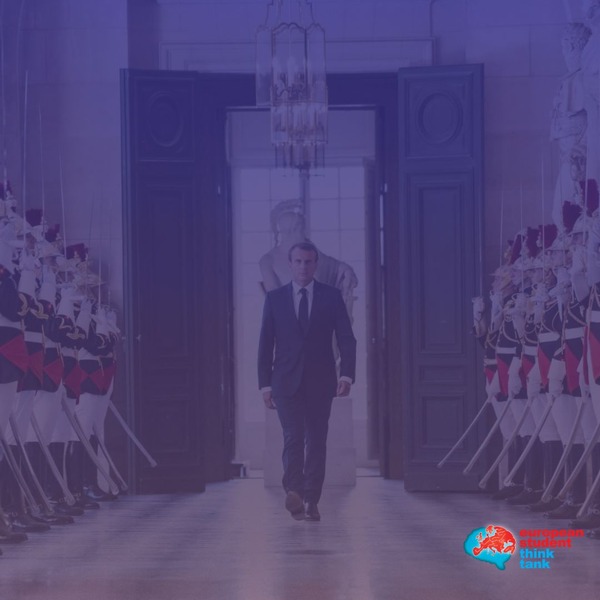
Lena Vogel received her Bachelor of Arts from the Department of Communication at the University of Münster, Germany.

The 7th of January 2015 – the date of the Charlie Hebdo shootings in Paris – showed once again the difficult relationship between media, especially satire, and religion. The controversy of this topic gained interest all over the world; it caused solidarity across borders for the satire magazine Charlie Hebdo and made the portrayal of the Islam a raising topic in all kinds of media. Since satire can send disturbing messages which can refer to sensitive topics like religion, I wanted to find out how German satire handles this powder keg.
Satire has a long tradition in Germany. During the past five years, new satire shows aired on TV, their viewer levels still increase (Surmann 2010: 125). Yet, satire on TV has received little attention in sociological research (Kleinen-von Königslow/Kehl 2012). Thus, this study focuses on the explosive subject of humoristic criticism towards Islam. The question “Black full beard and Kalashnikov?” refers to stereotypes and is a provocative way of looking at the representation of Islam. It shows how much of a cliché the portrayal in satire shows can be – still, my Bachelor’s thesis also shows another, a more sophisticated way of dealing with the portrayal of religion, as to be seen in its results.
To answer the question “How do German TV satire shows portray Islam?” I conducted a qualitative, explorative content analysis of the two German TV-satire shows “heute-show” and “Die Anstalt”. These specific shows were chosen due to their popularity and media coverage, but also because of their different styles of portrayal. On the one hand, the “heute-show”, a German adaption of the US-American “Daily Show” copies the style of a news show in a humoristic way. On the other hand, “Die Anstalt” is well-known for its investigative research and humoristic criticism (Krone 2015). It is mainly based on the style of cabaret. Due to these characteristics various forms of representation are expected. This corresponds with the idea of analysing a wide range of different depictions of Islam in German satire shows after the Charlie Hebdo shooting.
First, we need to take a closer look at what satire actually means from an academic point of view. Satire is a complex construct. The theoretical basis in my thesis is taken from Gilbert Highet (1962) who collected a range of aspects that can be used to identify satire work: „The characteristic features of satire: it is topical; it claims to be realistic (although it is usually exaggerated or distorted); it is shocking; it is informal; and (although often in a grotesque or painful manner) it is funny” (Highet 1962: 5). Another, albeit obvious sign: Satirists often underline themselves that their work is meant to be satiric. Both “heute-show” and “Die Anstalt” can be considered as satire according to this definition.
To analyze the representations of Islam in both satirical TV shows, I conducted a qualitative content analysis. The method introduced by Mayring (2008) offers an ideal combination of systematization and openness needed to investigate the complexity of satire. Taking this method into account, approximately 13 hours of screenings were analyzed, starting from the 7th of January 2015 (the day of the Charlie Hebdo Shooting) until the TV summer break (31st of May 2015). I merely used scenes that bare a reference to Islam for the underlying analysis. After systematizing and analyzing the material, different categories were developed. In other words: If the satire show uses a picture of a man with a black beard to portray Islam, then the category “stereotype” was coded. Considering all categories, five hypotheses were derived. They give an interesting overview about the portrayal of Islam in German TV satire shows:
- Islam is portrayed in form of extremist Islamism and in the context of terrorism.
- The portrayal of a Muslim stereotype is a recurring element.
- Criticism towards the Islam is presented by referring to external people (non-satirists).
- Satire shows take a position towards Islam and extremist Islamism and resigns to use humoristic elements.
- Society, the media and the controversy of the freedom of press and freedom of religion are criticized.
The hypotheses underline the complexity of satire: It is not possible to identify a universal portrayal used by satirists to paint an image of Islam. Satirists use provocation, for example by not separating Islam, radical Islamism and terrorism while talking about the religion of Islam. German TV satire shows name terrorist organizations like the “Islamic State” or the “Taliban”. Criticism towards Islam is likely outsourced; satirists criticize Islam themselves only seldomly. Mostly, negative comments about Islam appear in establishing shots. A popular example for this method: A short video clip showing a radical speech of a politician of a right movement is used in the satire show. Afterwards, the satirists comment on the statement, in most cases by pointing out the comment’s stupidity.
A recurring element is the use of a Muslim stereotype. When talking about Muslims, an image of a black bearded, slightly tanned man dressed in white clothes and a white praying cap is widely used. Adding to the association with terrorism, the cliché of Kalashnikov and black beard, which was also used by the Charlie Hebdo caricaturists, appears to be an important stylistic element. Furthermore, the society and media are criticized while referring to Islam. This element is frequently used by “Die Anstalt”: In role plays, a satirist takes the role of a society group’s stereotype, e.g. an anxious citizen that is worried about the influence of the Islam in Germany. Other satirists unmask the character by disproving his or her arguments. From time to time, satirists even resign to use humoristic elements and give a statement e.g. against radical Islamism or racism and underline its importance by not communicating it in a comical manner.
As a last step, I discuss the hypotheses extracted from the research material with regard to the relevant literature on satire and the Islam in the media. The results support some general assumptions: First of all, the use of criticism towards the society is typical for satire. Satire intends to motivate the society to initiate change (Caufield 2008: 7). Furthermore, literature underlines how complicated the representation of the Islam in the media can be (Kosthorst 2010: 23). Hafez (2000) points out that media mostly use a negative, violent image of Islam, and Karim (2004) stresses that Muslims are often viewed as terrorists in the Western media. This could explain the references made to terrorism and radical Islamism by the German TV satire shows under investigation. The picture of a stereotypical Muslim with a long dark beard and white clothes, which is also used in German TV satire shows, is furthermore part of a lot of caricatures about the Islam (Glavac 2013). The way the “heute-show” and “Die Anstalt” deal with Islam after the Charlie Hebdo shooting could be viewed as either typically for satire, or typically for the representation of the religion Islam, or both.
In sum, the study shows the considerable range of possible portrayals of Islam in German TV satire shows. Certainly, this case study has some limitations. Since only a short period of time after the Charlie Hebdo shooting was taken into account, a broader research approach is needed. However, the case study showed that German TV satire shows indeed use the image of “black beard and Kalashnikov” to portray Islam. Still, this is only one way to represent the religion – satire can also deal with the Islam in a more sophisticated way by taking a stand in the discourse about Islamism, Islam and racism towards it.
References:
Caufield, R. P. (2008): The influence of “Infoenterpropagainment”. Exploring the power of political satire as a distinct form of political humor. In: Baumgartner, J.C./ Morris, J.S. (Ed.): Laughing matters. Humor and American Politics in the Media Age, New York: Taylor & Francis, pp. 3-20.
Glavac, M. (2013): Der “Fremde” in der europäischen Karikatur. Eine religionswissenschaftliche Studie über das Spannungsfeld zwischen Belustigung, Beleidigung und Kritik. Göttingen: Vandenhoeck & Ruprecht.
Hafez, K. (2000): The West and Islam in the mass media. Cornerstones for a new international culture of communication in the 21st. century. Bonn: ZEI Discussion Paper.
Highet, G. (1962): The anatomy of Satire. Princeton: Princeton University Press.
Karim, K. H. (2004): War, propaganda, and Islam in muslim and western sources. In: Kamalipour, Y.R./ Snow, N. (Hrsg.): War, media, and propaganda. A global perspective. Maryland: Rowman & Littlefield, pp. 107–116.
Kleinen-von Königslow, K./ Kehl, G. (2012): Localizing the Daily show: The heute show in Germany. In: Popular Communication, 10., pp. 66–79.
Kosthorst, D. (2010): In lustiger Gesellschaft. Politischer Humor als Spiegel der Zeit. In: Stiftung Haus der Geschichte der Bundesrepublik Deutschland (Ed.): Spaß beiseite. Humor und Politik in Deutschland. Wemding: Aprinta, pp. 11–24.
Krone, T. (2015, 13. Juni): Lachen ja, aber bitte ernsthaft. In: Taz.de. http://www.taz.de/!5203749. (08.12.15)
Mayring, P. (2008): Qualitative Inhaltsanalyse. Grundlagen und Techniken. 10. Ed., Weinheim: Beltz.
Surmann, V. (2010): Spaßgesellschaftskunde. Deutsche Humorlandschaften nach 1990. In: Stiftung Haus der Geschichte der Bundesrepublik Deutschland (Ed.): Spaß beiseite. Humor und Politik in Deutschland. Wemding: Aprinta, pp. 123-134.

 The invention of development: power, narrative, and the afterlife of Truman’s speech
The invention of development: power, narrative, and the afterlife of Truman’s speech  Is the World Trade Organisation a Failure?
Is the World Trade Organisation a Failure?  Is EU citizenship for sale – or for keeps? A critical analysis of the CJEU’s Golden Visa ruling.
Is EU citizenship for sale – or for keeps? A critical analysis of the CJEU’s Golden Visa ruling.  The European Union in Space: From exploration and innovation to security and autonomy
The European Union in Space: From exploration and innovation to security and autonomy 


